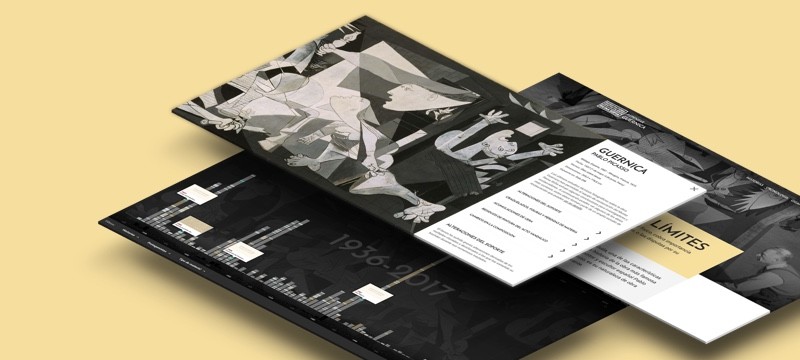In their traditional form, archives determine the grounds for being archived, the narratives which take precedence from them, elements which will be potentially forgotten. Therefore, although Guernica maintains the auratic nature of its materiality, it has also undergone a kind of “liberation”, for its symbolic value goes beyond its presence on canvas; the documents compiled on Guernica reflect how its history has transcended it.
Between the symbolical and the materiality
The aura of Guernica was ratified and enhanced in every journey it embarked upon, from its showing in Paris in 1937 to Philadelphia in 1958, the last place it would be viewed outside the Museum of Modern Art before its transfer to Spain. From that juncture, its state of conservation, and, by extension, the different rejections of its loan requests, have contributed to its myth and the debates around its legitimate ownership. Yet the other lives of the painting, acknowledged from less orthodox but no less pertinent approaches, can call into question this auratic and mythical make-up, starting with the valuation set in successive insurance assessments every time it was moved elsewhere. Furthermore, the replicas and reproductions in their many forms demonstrated how its symbolic rather than its physical presence held more significance.
Painting's democratization
When the symbolic dimension enters the frame, there is a “liberation” and “democratisation” of the painting, its image being appropriated by artists, social movements, demonstrations and struggles, as well as products intended for mass and commercial consumption. Guernica, subverted as an “artwork” in a canonical sense, becomes another subject, used either totally or partially for different ends; it becomes an image and language, a conductor for narrating other stories.
Regarding the achievement of this “property of the people”, Picasso’s wish for the painting’s final destination, these other lives and histories Guernica also gave rise to deserve to be considered, documented, archived and narrated, thus granting them a similar value to the painting itself.
These lives surmount the debates on its interpretation and symbology, for each appropriation opens a new reading.








